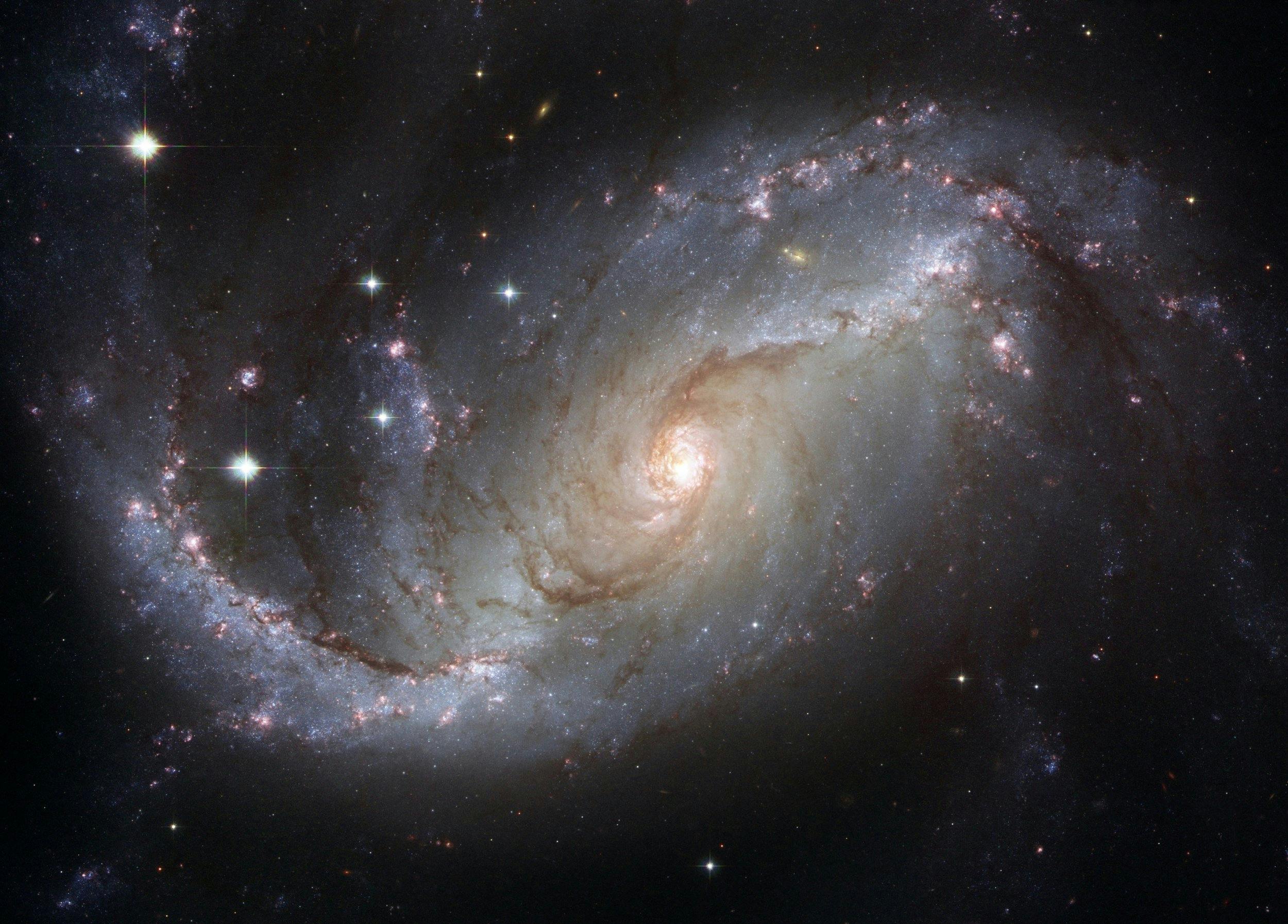Science
Scientists Investigate Gamma Ray Glow’s Link to Dark Matter

A mysterious glow of gamma rays emanating from the centre of the Milky Way has reignited discussions about the existence of dark matter. This unexplained radiation, initially detected by the NASA Fermi Gamma-ray Space Telescope, appears to exceed what known cosmic processes or stellar objects can account for within the galaxy. Dark matter, which is believed to constitute approximately 27 to 30 percent of the universe, has yet to be directly observed.
The glow, referred to as the Galactic Centre Excess, is concentrated in the central few thousand light-years of the Milky Way. Its intensity surpasses predictions based on existing models of cosmic-ray interactions and gas emissions. Researchers are considering two primary hypotheses to explain this phenomenon. One theory posits that the glow results from the annihilation of weakly interacting massive particles, or WIMPs, a leading dark matter candidate. If these particles collide, they could release gamma rays, producing the signal observed by the Fermi satellite.
Conversely, some scientists attribute the gamma-ray glow to a previously unresolved population of millisecond pulsars. These rapidly spinning neutron stars are known to cluster in the galactic bulge and emit gamma radiation. Recent studies published in Physical Review Letters and by research teams from MIT and Princeton University suggest that the statistical pattern of the emissions appears patchy, indicating multiple discrete sources rather than a smooth dark matter halo.
While the pulsar hypothesis has gained traction, it does not completely rule out dark matter. Research by astrophysicists Tracy Slatyer and Rebecca Leane suggests that dark matter signals could be misidentified as pulsar activity due to biases in earlier statistical analyses. Their recent findings indicate that when model parameters are adjusted, dark matter scenarios can match the observed gamma-ray map as effectively as pulsar models.
Additionally, pulsar models have seen improvements. Researchers have identified previously overlooked groups of faint pulsars, including those in binary systems, which could collectively explain the gamma-ray signal. The European Space Agency emphasizes that these developments do not eliminate the possibility of dark matter but underscore the complexity of the Milky Way’s central environment.
The ongoing exploration of this gamma-ray phenomenon has significant implications. The next generation of observatories, such as the Cherenkov Telescope Array, is expected to provide sharper imaging at higher gamma-ray energies. This advancement should help scientists determine whether the glow is a signature of diffuse dark matter or the result of individual sources.
For now, the gamma-ray excess remains unresolved. While dark matter continues to be a compelling possibility, it remains unconfirmed. As new instruments refine our understanding, astronomers are eager to ascertain whether the glow from the Milky Way originates from the universe’s most elusive substance or from hidden populations of familiar stars.
-

 Health3 months ago
Health3 months agoNeurologist Warns Excessive Use of Supplements Can Harm Brain
-

 Health3 months ago
Health3 months agoFiona Phillips’ Husband Shares Heartfelt Update on Her Alzheimer’s Journey
-

 Science2 months ago
Science2 months agoBrian Cox Addresses Claims of Alien Probe in 3I/ATLAS Discovery
-

 Science2 months ago
Science2 months agoNASA Investigates Unusual Comet 3I/ATLAS; New Findings Emerge
-

 Science1 month ago
Science1 month agoScientists Examine 3I/ATLAS: Alien Artifact or Cosmic Oddity?
-

 Entertainment5 months ago
Entertainment5 months agoKerry Katona Discusses Future Baby Plans and Brian McFadden’s Wedding
-

 Science1 month ago
Science1 month agoNASA Investigates Speedy Object 3I/ATLAS, Sparking Speculation
-

 Entertainment4 months ago
Entertainment4 months agoEmmerdale Faces Tension as Dylan and April’s Lives Hang in the Balance
-

 World3 months ago
World3 months agoCole Palmer’s Cryptic Message to Kobbie Mainoo Following Loan Talks
-

 Science1 month ago
Science1 month agoNASA Scientists Explore Origins of 3I/ATLAS, a Fast-Moving Visitor
-

 Entertainment2 months ago
Entertainment2 months agoLewis Cope Addresses Accusations of Dance Training Advantage
-

 Entertainment3 months ago
Entertainment3 months agoMajor Cast Changes at Coronation Street: Exits and Returns in 2025









